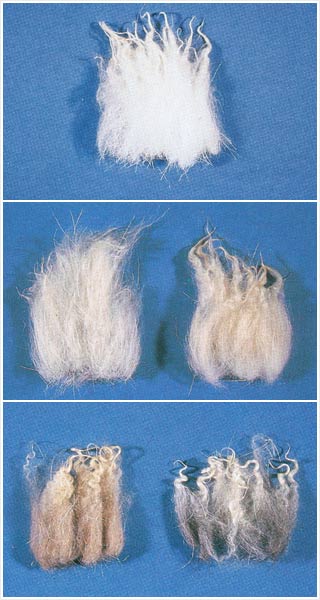The Comfort of What Is Cashmere: How It Changes Your Wardrobe
The Comfort of What Is Cashmere: How It Changes Your Wardrobe
Blog Article
Discovering the Numerous Kinds of Cashmere a Natural Fiber for Ultimate Deluxe
Cashmere, a natural fiber, is typically connected with deluxe and convenience. However, not all cashmere is produced equivalent. From the highly soft Mongolian variety to the light-weight heat of Indian Pashmina, each kind provides its very own unique attributes and appeal. The much more affordable Chinese cashmere, the typical Scottish variant, and the premium Italian mix, all inform a different story of this amazing fiber. As we unravel the globe of cashmere, a much deeper understanding of its real worth and elegance starts to arise.
Recognizing the Luxurious Nature of Cashmere
Cashmere, typically linked with luxury and convenience, holds a distinct allure in the globe of all-natural fibers. This soft, light-weight product is wanted for its phenomenal heat and impressive resilience. Unlike other natural fibers, cashmere combines insulation with breathability, offering unmatched comfort across differing temperatures. Its glossy finish and soft appearance add to its premium allure, validating the premium rate that usually includes cashmere garments. Furthermore, cashmere's intrinsic crease resistance and flexibility boost its value, making it a preferred selection for premium clothes and accessories. In spite of its fragile appearance, cashmere possesses an unusual durability, able to maintain its form and elegant feel gradually. This unique blend of characteristics seals cashmere's placement as a sign of sophistication and extravagance.
Simply What Is Cashmere and Where Does It Originate from?

Offered these outstanding top qualities, one might question the beginning and make-up of this lavish fiber. Cashmere is obtained from the soft undercoat of cashmere goats, mostly found in Mongolia, China, Iran, and Afghanistan - is cashmere a natural fiber. These goats are adjusted to rough climatic problems, generating an incredibly great, soft underfur as a defense versus the bitter cold. This underfur, or undercoat, is what is collected for cashmere. Each spring, when the goats normally lost their winter months coat, farmers brush out the great underhair, leaving the coarser hair behind. This careful procedure adds to the shortage and high expense of cashmere. With its origin in the severe landscapes of Asia, cashmere is a testament to nature's ability to produce deluxe from adversity.
Decoding the Various Sorts Of Cashmere
Understanding the various types of cashmere is key to appreciating the top quality and unique attributes of this luxurious material. Normally, cashmere is categorized right into 3 types: raw, virgin, and reused. Decoding these types is the first action in comprehending the exclusivity and worth of cashmere.

The Special Features of Each Kind Of Cashmere
Having checked out the different categories of cashmere, it becomes evident that each type boasts its unique collection of features. Mongolian cashmere, for circumstances, is renowned for its superior high quality, due to Mongolia's severe wintertimes that create longer and finer fibers. Alternatively, Chinese cashmere is frequently more budget-friendly, though its much shorter fibers can reduce toughness.
Why Cashmere Is the Epitome of High-end in vogue
Cashmere holds a well-regarded linked here position on the planet of style, considered a symbol of luxury description and refinement. Its attraction is not just in its soft qualities and warmth, however also in its rarity and the thorough procedure associated with its procurement. Cashmere is stemmed from the fine undercoat of Himalayan goats, understood for their exceptional high quality fiber. The shortage of this fiber, incorporated with the labor-intensive procedure of collection, contributes to its high rate and special condition. Cashmere's exceptional convenience and durability make it a sought-after product in the production of premium garments. Its natural light-weight and protecting homes include in its desirability, making it the epitome of deluxe in fashion.
The Process of Making Cashmere: From Goat to Garment
The journey of cashmere, from being an undercoat of a Himalayan goat to an elegant garment, is a detailed one. With the arrival of springtime, farmers in Mongolia and China accumulate the wool by combing the goats, making certain no damage is done. The gotten wool contains rugged external hair and soft downy undercoat. This blend is then painstakingly separated, with only the soft down made use of for cashmere. This raw cashmere is washed, colored and spun right into thread. The thread is then woven or weaved right into textiles. over at this website The final action entails pushing and cleaning to provide the textile its characteristic soft qualities and heat. From goat to garment, each action is a testament to the creativity, ability and perseverance associated with crafting cashmere.

Conclusion
To conclude, cashmere, with its natural elegance and unmatched comfort, preponderates worldwide of deluxe fashion. The diversity in kinds, varying from the soft Mongolian, lightweight Indian Pashmina, affordable Chinese, standard Scottish, to the colorful Italian, reveals the adaptability of this natural fiber. The meticulous procedure of transforming it from a goat to a garment even more adds to its exclusivity, making cashmere the epitome of class and high-end.
Cashmere, an all-natural fiber, is typically connected with luxury and comfort (is cashmere a natural fiber).Cashmere, typically connected with deluxe and convenience, holds an unique attraction in the world of all-natural fibers. Unlike various other all-natural fibers, cashmere combines insulation with breathability, offering unparalleled comfort across varying temperature levels. Cashmere is derived from the soft undercoat of cashmere goats, mostly found in Mongolia, China, Iran, and Afghanistan. Cashmere is acquired from the fine undercoat of Himalayan goats, recognized for their superior quality fiber
Report this page